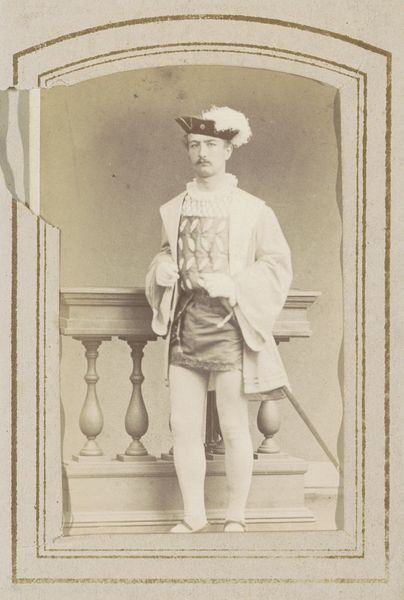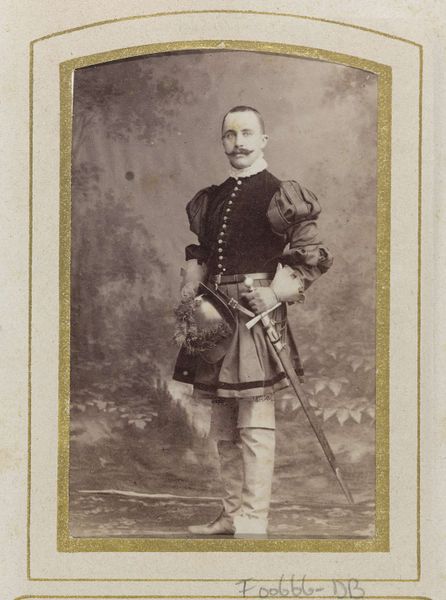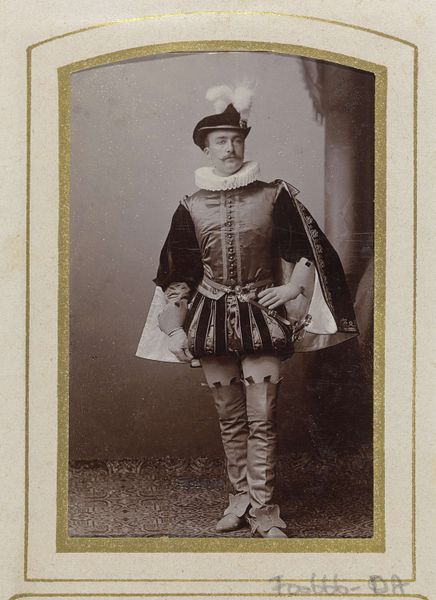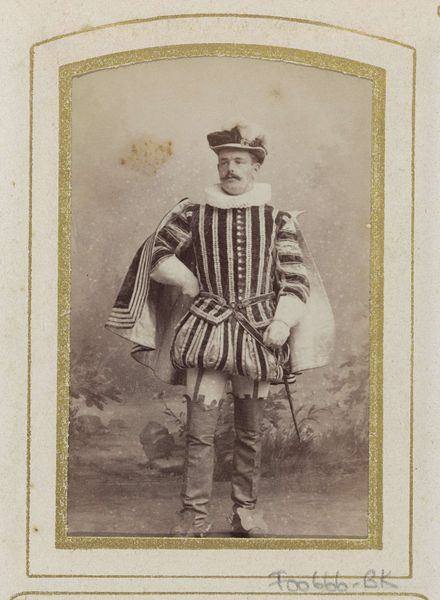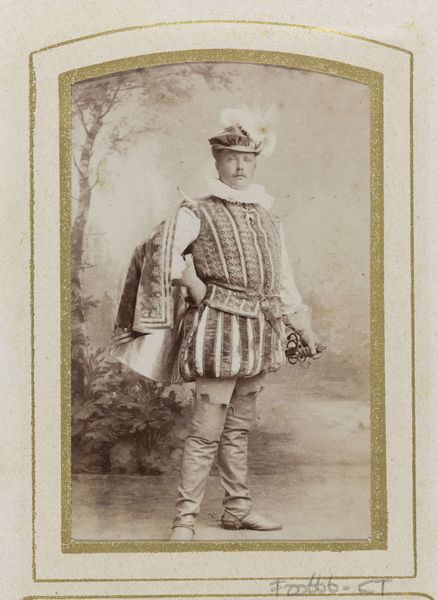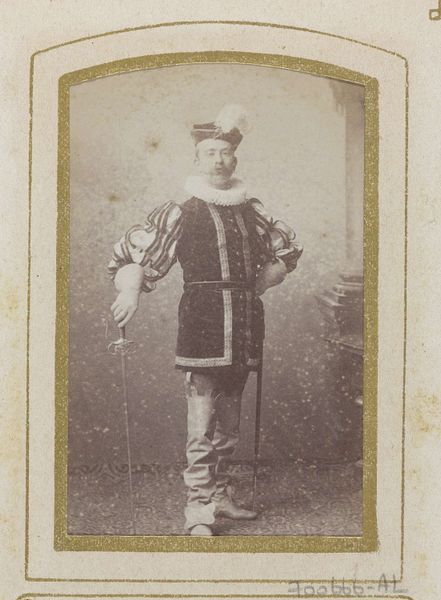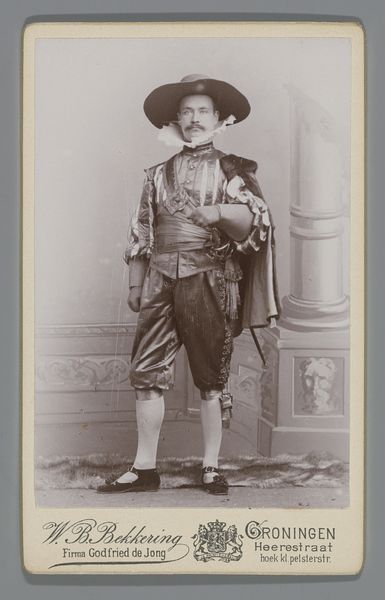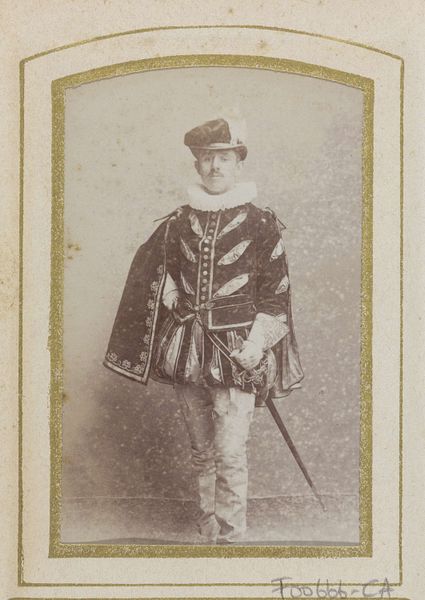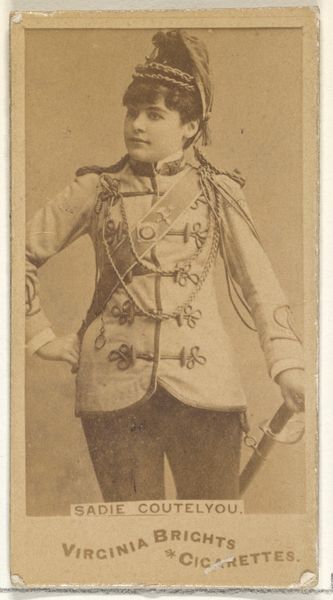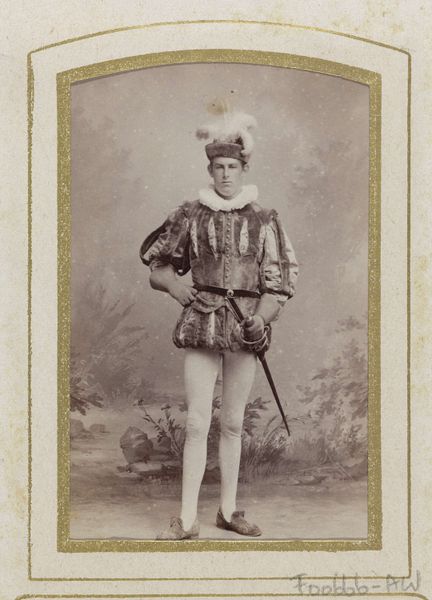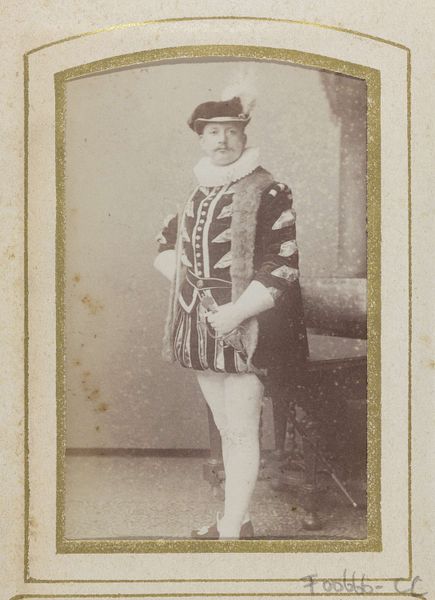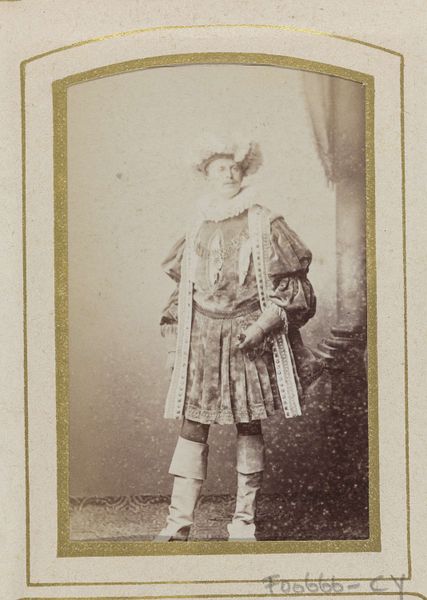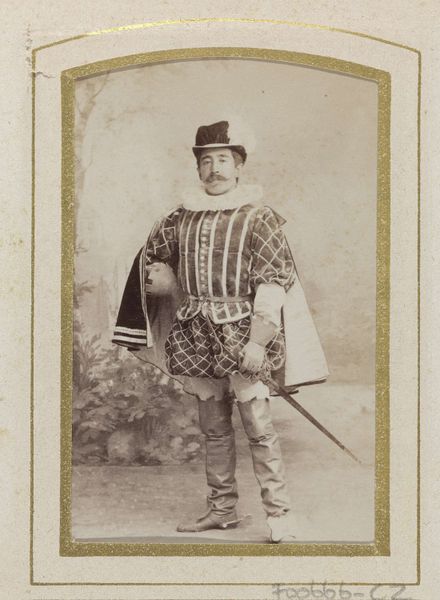
Portret van een student in kostuum met sabel, muts en mantel 1864 - 1890
0:00
0:00
daguerreotype, photography
#
portrait
#
16_19th-century
#
daguerreotype
#
photography
#
19th century
#
genre-painting
#
academic-art
Dimensions: height 96 mm, width 61 mm
Copyright: Rijks Museum: Open Domain
Editor: This is "Portret van een student in kostuum met sabel, muts en mantel," taken by Maurits Verveer sometime between 1864 and 1890. It's a daguerreotype photograph currently held at the Rijksmuseum. I’m really struck by how theatrical it feels; he's clearly playing a role. What do you make of it? Curator: It's intriguing, isn't it? The subject is not merely depicted but actively participating in the construction of an image, wearing what is essentially a costume. The materials, the fabrics of the cloak, the shine of the saber, they speak to a rising middle class seeking to emulate aristocratic symbols of power. Notice how meticulously the materials are rendered; it elevates the subject by associating him with craftsmanship. How does the choice of daguerreotype impact your perception? Editor: That's a great point. The daguerreotype process itself lends a certain weight and permanence, like claiming a position in society. It feels almost subversive, the act of a student using a technology still linked to high art to fashion this aristocratic persona. So, it’s the performance of class, facilitated by new methods of production? Curator: Precisely. It highlights the democratization of image-making and the accessibility of these status symbols through material means. Consider the studio backdrop, too – a standardized, readily available commodity that further reinforces this idea of fabricated identity. Do you see how the 'authenticity' of the daguerreotype contrasts with the inauthenticity of his attire? Editor: Yes, it’s a fascinating tension. He is trying to emulate, but also calling attention to the act of emulation itself through the photographic process. I see the difference between owning an item of high class versus portraying a version of that ownership. Curator: Exactly! It becomes a commentary on the availability of materials, and thus, potentially, the means to assume certain identities or at least project them. Perhaps we're looking at an early form of social media posturing, only through photography. Editor: So, in the end it speaks of social ambitions, doesn't it? Thanks, that's been eye-opening. I'll never see these old photos the same way again. Curator: Indeed, looking at the art of the time this way gives one a better insight into society at that time, its means and aspirations.
Comments
No comments
Be the first to comment and join the conversation on the ultimate creative platform.
